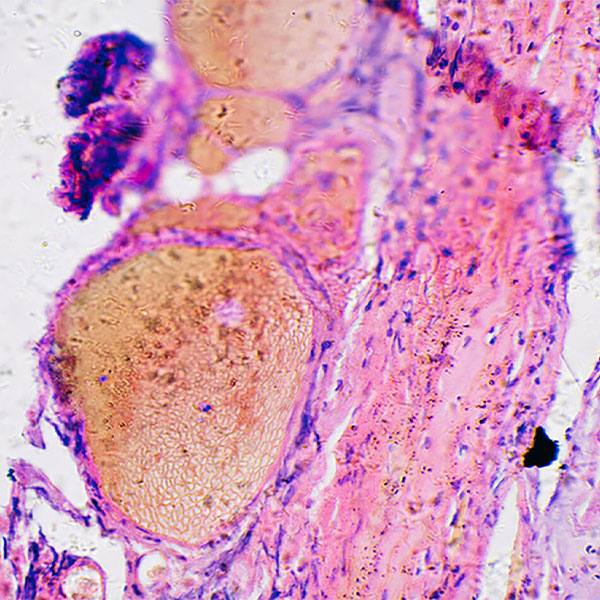-
Research
Preclinical Discovery Research Leads to Better Understanding of Steroids
In a recent paper, scientists from Mayo Clinic and Salk Institute for Biological Studies, identify a new approach to boosting the action of steroids. As a class, steroids are commonly used for conditions such as arthritis, asthma, flare-ups of multiple sclerosis, or as part of cancer treatment because they act to calm immune system activity. These drugs block genetic instructions that kick off inflammation and escalate it using the innate immune system. The article appears in the Proceedings of the National Academy of Sciences of the United States of America.
At Mayo Clinic in Arizona, Zong Wei, Ph.D., a Mayo Clinic scientist, and his team study inflammation in the context of diabetes and metabolism. Using cell and animal models, the team examines genes involved in inflammation, and how those genes are regulated inside the nucleus of the cells, called epigenetics.
"We previously identified a novel epigenetic modulator, BRD9, that regulates inflammatory responses in pancreatic beta cells," explains Dr. Wei, a co-senior author on the paper. Their initial work suggested a link between the BRD9 protein and a receptor that controls the action of a type of steroid called glucocorticoids.
"For this study, we focus on the function of BRD9 in innate immunity, which has a significant role in the progress of many diseases, such as obesity and diabetes, gastrointestinal inflammation and cancer," says Dr. Wei.
Based on their understanding of BRD9, the scientists expected that blocking the protein would help turn down inflammation.
"However, we were surprised to find that pharmacological inhibitors of BRD9 not only act as inflammatory suppressors alone, but are able to synergize with dexamethasone, a widely used synthetic glucocorticoid, even at the highest dose in our system," says Dr. Wei. "Considering that dexamethasone is one of the most potent anti-inflammatory agents, it's quite unusual to see that BRD9 inhibitors are able to further suppress inflammation on top of that."
The study's goal was to expand knowledge of how modulating the epigenetic machinery can increase the effect of steroid hormone function. From a basic science perspective, Dr. Wei says the discovery of BRD9's role in the innate immune response is important for future research. And from a therapeutic perspective, it may suggest a way to boost the function of steroids while decreasing their side effects.
"Although steroids have been widely used, a number of caveats limit their function," says Dr. Wei. "High doses have many side effects, and there are clinical cases of patients who are resistant to glucocorticoids. I think this is a good example of how the basic research aiming at solving fundamental biology questions can result in something with translational values."
Next the team will continue to examine the molecular underpinnings of this epigenetic regulation and determine the function of BRD9-inhibitors in disease models, such as diabetes or wound healing. Given the significance of inflammation and use of steroids in a wide range of diseases, this finding may have broad implications.
"Identifying new targets and novel agents is the first step of finding a cure. Historically, Mayo Clinic is known to be the place for many key fundamental discoveries, including discovering a key steroid, cortisone," says Dr. Wei. Cortisone's partner ― the glucocorticoid receptor ― was cloned at the Salk Institute for Biological Studies in the lab of Ronald Evans, Ph.D.
In addition to Dr. Wei, authors from Mayo Clinic and Salk Institute for Biological Studies, include Michael Downes, Ph.D., co-senior author, and Ronald Evans, Ph.D. See the full paper in the Proceedings of the National Academy of Sciences of the United States of America for funding information. The authors declared no conflict of interest.









